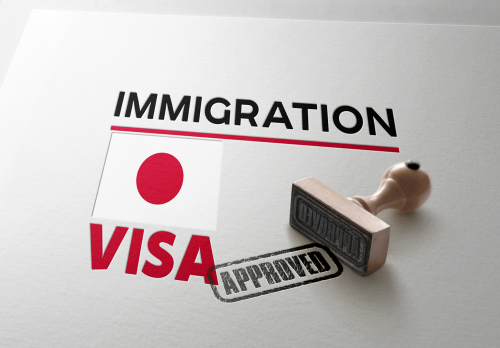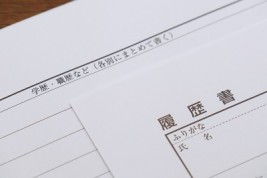The new Japanese Immigration Policy, spearheaded by Prime Minister Shinzo Abe in late 2018 and implemented later in April 2019, is the country’s way of addressing the depleting and aging Japanese workforce, especially in their IT industry.
The current administration is looking to hire at least 345,000 foreign workers in the next 5 years. They initiated the program by creating two types of visas. The first visa is for the “low-skilled” aspirants (Specified Skills Visa-1 or SSV-1) who are allowed to work for a maximum of 5 years. The second is for the “medium-skilled” ones (Specified Skills Visa-2 or SSV-2) who can stay for 10 years, with non-stop renewable visas and even the option of applying for permanent visas after.
But as of recently, only a small portion of the applicants have been granted employment by the companies, with only 30,000 estimated foreign IT workers being a part of the Japanese workforce today.
What could this mean for the future of foreign IT workers? Is Japan truly ready to embrace immigrants into the workforce? And what’s the best type of visa that IT professionals can apply for to ensure employment? In this article, we’ll address all of those questions and understand how the new Japanese Immigration Policy affects foreign IT workers.
Contents
Overall Response to the New Japanese Immigration Policy

Although the government has good reasons to execute the Japanese Immigration Policy, it still managed to have mixed reactions from everyone, including some local leaders, traditional Japanese nationals, and foreigners seeking long-term employment in the country.
Some officials were skeptical about the new program noting that previous policies with similar platforms, such as Japan’s “trainee” program, have failed due to inadequacies and proneness to abusive practices. Leaders also voiced concerns over probationary employees under the existing trainee program being forced to work excessive overtime, severely underpaid, and in some instances, having their passports embargoed by their employers.
Meanwhile, traditionalists criticize the policy as an “easy” route for foreigners to take if they desire to live in the country permanently. Aside from allowing workers to be permanent residents, it also gives them the ability to naturalize their respective families. Some Japanese nationals also take issue with the ever-growing presence of foreigners in Japan.
On the other hand, foreigners praise Japan for welcoming international talents and creating new programs that will benefit foreign aspirants and boost the country’s economy. IT workers are especially thrilled, as the country has tons of great opportunities for tech experts to grab. And even though some people have not yet embraced this new concept, the current regime is invested in making this vision come to fruition.
Will Japan Finally Open Its Doors to Immigrants?
Because of the constant skepticism towards the policy and only a small number of foreign workers have successfully applied for jobs in the country in recent months, many have wondered if Japan has genuinely opened its doors to gaijin like the thousands of aspiring IT workers.
The answer is a resounding yes. Even before Prime Minister Abe lobbied for the new program, Japan saw an increase in the presence of foreigners in the country every year. And since April 1, 2019, when the immigration policy was officially implemented, various industries have accepted foreign workers. In fact, in the first 6 months of the new system, Japan saw its highest recorded foreign worker population with 1,658,804.
In recent months, however, there has been a decline in the number of applicants from international talents hired by Japanese companies. It has absolutely nothing to do with the companies, the local government, the policy’s skeptics, and even the aspirants. Japan’s current administration is doing its absolute best to fulfill their goals with the new immigration policy.
In the first months of the pandemic, the job market has been slow in accepting applications from international talents, but this isn’t true for IT companies. As the tech industry embraces the online application process, IT professionals’ job market continues to welcome foreign applicants as the need for workers in this field is expected to rise.
The coronavirus may have put a setback in Japan’s job market, but aspiring foreign workers in the IT field and other industries can still apply for work visas overseas during the pandemic. Japan has gradually eased its travel restrictions to kickstart the country’s economy. As soon as the travel restrictions are completely lifted, foreigners can start working in the country again.
Japan’s Immigration Policy – The New Specified Skills Visa

The new Specified Skills Visa or SSV is perfect for workers seeking opportunities in the IT industry of Japan. The government’s goal is to make up for the expected 800,000 IT worker deficit by 2030. So, there are plenty of employment openings that are just ripe for the picking.
Machine Parts and Tooling industry:
IT workers who can assist them in machine inspection and maintenance.
Electric, Electronics, and Information industry and Industrial Machinery industry:
IT workers to aid in manufacturing, electronic and electrical equipment assembling, and machine maintenance.
Construction industry:
IT workers who are experts with telecommunications.
Shipbuilding and Ship Machinery industry:
IT workers who can help in electrical equipment assembling.
Automobile Repair and Maintenance industry:
IT workers who can support maintenance and repair for cars’ infotainment systems.
Manufacture of Food and Beverages:
General food and beverage manufacture.
Aside from the tons of opportunities available, another great thing about the SSV is how the Japanese government will take care of the foreign workers who’ll be residing in the country.
Companies are required to give services such as housing support, Japanese language, lifestyle, and administrative procedures tutorials, assistance with work-related concerns, and even providing aid to international talents who have been terminated or are subject to termination.
But for international IT workers to work under the SSV program and avail of these benefits, they have to meet specific requirements. For SSV-1 workers, they need to have a Japanese Language Proficiency Test (JLPT) N4 certificate, have a passing grade in the Specified Skills Test, and be able to stay and work in the country for 5 years.
Meanwhile, applicants of SSV-2 have to compile their JLPT N4 certificate, proof of a higher level of specialized skill with experience and must be able to reside in the country until they become a permanent Japanese resident.
Conclusion
The Japanese Immigration Policy has positively affected foreign IT workers in Japan. Despite the COVID-19 situation, the future of foreign IT workers in Japan looks promising. The Japanese government has exerted so much effort in making immigrants feel welcomed in the workforce despite some backlash. The country’s SSV program presents terrific openings for foreign workers and IT talents alike.
Take this time to learn more about Japan’s Immigration Policy and apply for work online at the comfort of your home. Your next IT employment opportunity could be in Japan. Discover openings and useful tips on our website below.
Sources:
https://www.bbc.com/news/world-asia-46492216
https://www.migrationpolicy.org/article/japan-labor-migration-reforms-breaking-past
https://thediplomat.com/2020/01/is-japan-ready-to-welcome-immigrants/
https://www.nippon.com/en/in-depth/d00515/
https://english.kyodonews.net/news/2020/07/a022f23f4d45-coronavirus-outbreak-latest-july-1-2020.html









